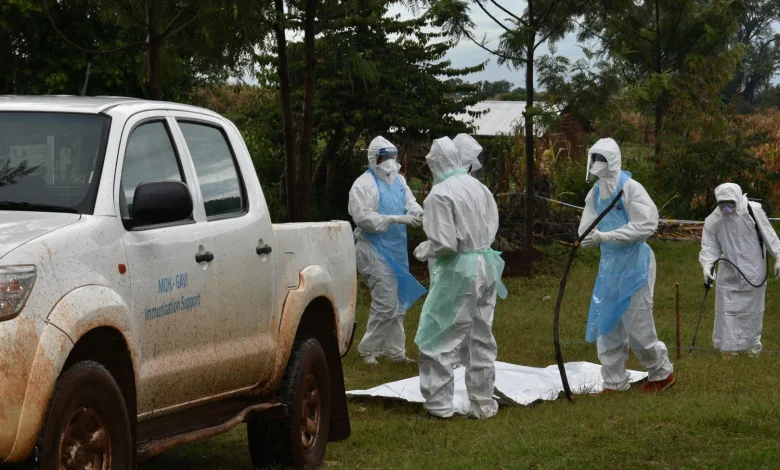The Next Black Swan? Assessing the Pandemic Potential of Marburg Virus”

Marburg virus disease (MVD) — caused by the Marburg virus — is a hemorrhagic-fever pathogen in the same family as Ebola. It is rare but highly lethal in past outbreaks. While global risk remains lower than for more transmissible respiratory viruses, the combination of no licensed vaccine or established wide-treatment, fairly high fatality, and repeated outbreaks in Africa render it a credible threat for global health security.
. Why Marburg virus could turn into a pandemic: key risk factors
- High fatality and severity: While not all outbreaks have matched the 88% case-fatality rate seen in some historical events, the disease remains extremely dangerous.
- Zoonotic reservoir and spill-over risk: The Egyptian fruit bat (Rousettus aegyptiacus) is a known reservoir; human exposures in mines, caves or contact zones remain persistent.
- Person-to-person transmission: Though not airborne (as currently known), MVD spreads via bodily fluids, contaminated surfaces and close contact, especially in healthcare settings and funerals
- No licensed vaccine or broadly deployed treatment: Vaccine candidates exist, but none fully approved for global use yet
- Weak health systems, delayed detection: Many affected countries have limited outbreak-response capacity, delays in diagnosis and contact tracing, which increase risk of wider spread. For example, recent outbreaks in Rwanda, Tanzania and Equatorial Guinea
- Global travel and interconnectedness: Although past marburg outbreaks have remained localized, international flights and movement of persons raise the possibility of exportation to other continents.
- Mutation and unknown dynamics: While there is no current indication that the virus has mutated into a highly transmissible form, the possibility remains a concern for pandemic planners. Some academic assessments suggest vigilance is warranted.
Given these factors, although the probability of a full-blown global pandemic remains moderate, the impact of such an event would be very high. It warrants serious preparedness.
. Risk Matrix: Marburg Outbreak Scenarios
Here is a traffic-light style risk matrix for three scenarios of Marburg virus spreading:
ScenarioLikelihoodImpactKey Risk DriversGreen (Low Spread / Contained Outbreak)Moderate-HighLow-MediumEarly detection, robust public-health response, no major exportation, limited person-to-person chains.Amber (Regional Spread / Multi-Country Outbreak)ModerateHighDelayed detection, weak health systems, cross-border spread into several African nations, export to neighbouring regions.Red (Global Pandemic Scenario)Low-MediumVery HighMutation or enhanced transmissibility, multiple exportations, failure of containment, travel-linked global chains, overwhelmed health systems worldwide.
Interpretation: The likelihood of the “Red” scenario is lower compared with the others, but its impact is far larger, making it a critical concern for global policy-makers.
. Intelligence Note: African States Most Vulnerable
Below are states in Africa with heightened vulnerability for Marburg virus outbreaks and potential amplification.
Key Vulnerable States:
- Tanzania: The Kagera region witnessed an outbreak (March 2023) with 9 cases. The region is a transport hub and borders several countries—raising cross-border spill-over risk.
- Rwanda: First outbreak in late 2024 (66 cases, 15 deaths) involved healthcare workers and urban centres (Kigali). High population density and travel links increase risk.
- Equatorial Guinea: Experience in early 2023 (17 cases) shows even smaller–capacity states can be severely impacted.
- States with weak health infrastructures, remote communities, bat-human interface zones, and porous borders (e.g., parts of DRC, Uganda, Angola) also merit listing.
3.3. Urban introduction
If Marburg enters:
- Lagos,
- Nairobi,
- Kinshasa,
- Johannesburg
the outbreak could be significantly larger before containment.
But even in these cases, the maximum realistic spread is regional, not global.
Key vulnerability factors to note:
- Poor surveillance, inadequate laboratory capacity, weak contact tracing.
- High mobility (mining towns, caves, bat-habitats) and cultural practices (funerals, caregiving) that facilitate transmission.
- Cross-border migration, informal trade, refugee flows.
- Limited access to supportive care and hesitancy toward health systems.
For U.S. and global health-security planners: prioritise support to these vulnerable states for early detection, stockpiling appropriate PPE, rapid-response teams, and strengthening border/transport surveillance.
. Simulation: Global Spread Under Worst-Case Assumptions
Assumptions:
- A Marburg virus strain with slightly enhanced person-to-person transmissibility emerges (though still requiring close contact).
- Initial undetected spill-over event in an African mining region with international worker flows.
- Weak containment locally; within 4-6 weeks cross-border spread to neighbouring states.
- A symptomatic traveller takes international flight to Europe or Asia before detection.
Timeline (worst-case):
- Week 0-4: Index cluster in Africa; local health system overwhelmed; spread to 2 neighbouring countries.
- Week 5-8: One exported case to Europe/Asia; secondary cases in hospital setting in destination country.
- Week 9-12: Multiple exportations; global travel links seed clusters in 3-5 continents; healthcare systems divert resources to outbreak management.
- Week 13-20: Because no licensed vaccine or antiviral, aggressive public-health measures (quarantine, travel bans) hamper economy; fatality rate ~30-50% depending on setting; trust in institutions declines; economic shock.
- Beyond Week 20: Pandemic fatigue, mutation risk, potential for virus to settle into endemic pattern with sporadic outbreaks globally.
Global consequences:
- Healthcare infrastructure strained, particularly in low-income countries.
- Travel & trade heavily disrupted; supply-chain shocks.
- Political panic, border closures, suspicion of “disease importation”.
- Potential for economic recession, global coordination breakdown.
For the U.S.: Even though historically risk is “low,” the simulation shows that importation and domestic clusters cannot be ruled out. Marginal preparedness gaps (delayed detection, hospital-infection control) could amplify the threat.
Political Risks and Strategic Beneficiaries
Political risks:
- Governments hit by Marburg outbreaks may face legitimacy crises, collapse of health governance, public-panic backlash.
- Regional instability: contagion events could destabilise fragile states, create refugee flows, collapse of local governance.
- Geopolitical reshuffling: Countries less affected by outbreak may assert dominance; health diplomacy becomes a tool of influence.
- Diversion of attention: States facing outbreaks may neglect other priorities (e.g., security, economy), opening space for external actors.
Who benefits?
- China/Russia: In a health-security vacuum, external powers offering rapid responses, infrastructure investment or bilateral deals could win influence in affected states.
- Pharmaceutical / Biotech Firms: Those developing vaccine or therapeutics stand to gain from urgent demand and funding.
- Regional rivals: Countries unaffected but geographically close might gain leverage over afflicted neighbours (economic advantage, migration flow control).
- Global health-leaders: WHO, Africa CDC, major donor countries may increase their influence via response leadership.
Thus, a Marburg pandemic scenario is not just health-risk, but a geopolitical contest. External actors will vie for influence, creating governance and security implications far beyond the immediate disease domain.
Policy Recommendations
- Prioritise early detection & surveillance in high-risk African states; invest in labs, contact tracing, training.
- Accelerate vaccine/therapeutic development and ensure equitable access.
- Strengthen global travel surveillance, hospital-infection control, and cross-border cooperation.
- Pre-position surge-capacity for PPE, isolation units in vulnerable regions.
- Engage politically: avoid stigmatising outbreak states; provide transparent information; coordinate with regional bodies like Africa CDC.
- Plan for worst-case: scenario planning, simulation exercises, supply-chain resilience.
While the probability of a Marburg virus pandemic remains lower than that of more transmissible pathogens, the impactof such an event would be enormous — socially, economically, politically. The disease’s characteristics, the weak capacity in many at-risk states, and the absence of fully licenced counter-measures make it a credible “black-swan” scenario for global health security. Policymakers and intelligence practitioners should treat Marburg not just as a remote epidemiological risk, but as a geostrategic threat with cascading consequences.





